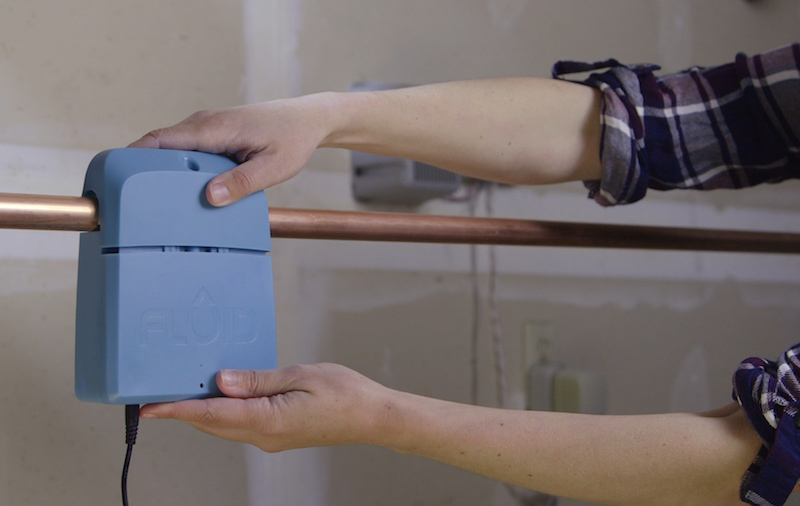Innovative Solutions for Early Detection of Water Leakages in Buildings and Infrastructure
From sophisticated leak detection technologies to the deployment of IoT sensors for real-time tracking, the landscape of leak prevention is progressing quickly. Automated water circulation analysis systems are improving exactly how leaks are determined and dealt with, paving the means for a positive strategy to water leak detection.
Advanced Leak Detection Technologies
Advanced leakage discovery modern technologies, furnished with cutting-edge sensors and algorithms, play an essential role in promptly identifying and pinpointing water leakages in numerous setups. These innovations use a mix of acoustic, thermal, and electro-magnetic sensing techniques to detect leaks accurately. Acoustic sensors discover the audio of getting away water, permitting precise localization of the leakage source. Thermal imaging detects temperature level modifications triggered by water leakage, providing one more effective method for leak identification. Electro-magnetic sensors can determine modifications in magnetic fields brought on by water, supplying yet one more layer of leak discovery ability.

IoT Sensors for Real-Time Tracking
In the world of modern-day water leakage discovery, the assimilation of IoT sensors for real-time monitoring represents a crucial innovation in enhancing aggressive leak discovery capacities. These sensing units provide constant monitoring of water supply, offering real-time information on water flow prices, pressure variants, and temperature level adjustments. By leveraging IoT innovation, these sensing units can identify even the tiniest anomalies in water use patterns, allowing very early identification of possible leakages before they escalate right into major issues.
IoT sensing units transfer data to a central system, where advanced formulas analyze the info and produce alerts or notifications when irregularities are found. This real-time tracking capacity permits property owners or center managers to quickly deal with leaks, lessening water damages, minimizing repair expenses, and saving water sources.
Furthermore, IoT sensors can be integrated with building monitoring systems, permitting for computerized reactions to spotted leaks, such as shutting down water shutoffs or turning on pumps to alleviate the impact of leaks. In general, the execution of IoT sensors for real-time surveillance substantially enhances the effectiveness and performance of water leak discovery in structures and infrastructure.
Artificial Intelligence Algorithms for Leak Forecast

One trick advantage of using artificial intelligence for leakage forecast is its ability to continuously discover and boost its precision gradually. As more information is collected and fed into the formula, it can improve its forecasts and adjust to transforming problems, eventually enhancing the reliability of leakage detection systems.
In addition, device discovering algorithms can aid in recognizing subtle indicators of leakages that may go undetected by standard monitoring techniques. water leak detection. By evaluating complicated information sets in real-time, these formulas can give early warnings and notifies, permitting punctual treatment and preventative upkeep to reduce prospective water damages and associated expenses
Making Use Of Thermal Imaging for Leakage Discovery
Thermal imaging modern technology supplies a promising strategy for detecting water leakages in numerous systems and infrastructures. By utilizing infrared radiation and temperature variations, thermal imaging electronic cameras can recognize concealed leakages that are not easily visible to the nude eye.
One of the key benefits of thermal imaging for leakage detection is its non-intrusive nature. On the whole, the use of thermal imaging technology boosts the efficiency and precision of water leakage detection, making it a useful tool for preserving the honesty of buildings and facilities.
Automated Water Circulation Evaluation Systems
Just go to the website how can computerized water circulation analysis systems transform the detection and monitoring of leakages in numerous systems and facilities? Automated water circulation evaluation systems provide an aggressive method to leak detection by continuously checking water flow rates and patterns. By developing baseline data, these systems can quickly identify variances that may indicate a leak, allowing timely intervention to protect against substantial damages.
These systems use innovative formulas to assess real-time data and supply prompt notifies when abnormalities are detected, enabling speedy action to be taken. Additionally, automatic water circulation analysis systems can be integrated with building monitoring systems or IoT platforms, improving general effectiveness and making it possible for remote have a peek here monitoring abilities.
In addition, the information gathered by these systems can be utilized for anticipating upkeep functions, helping to identify prospective weak factors in the facilities prior to leakages occur. On the whole, the implementation of automated water flow evaluation systems can significantly boost leak detection and monitoring techniques, ultimately bring about cost savings, minimized water waste, and increased sustainability in structures and facilities.

Conclusion
In conclusion, the assimilation of innovative leak detection innovations, IoT sensors, equipment understanding formulas, thermal imaging, and automatic water circulation Bonuses evaluation systems offers ingenious options for very early discovery of water leakages in buildings and framework. These technologies allow real-time tracking, prediction of leaks, and effective discovery techniques to protect against water damages and waste. Executing these remedies can assist in maintaining the honesty and sustainability of water supply in different setups.
Comments on “Comprehensive Overview to Water Leak Detection for Homeowners and Services”